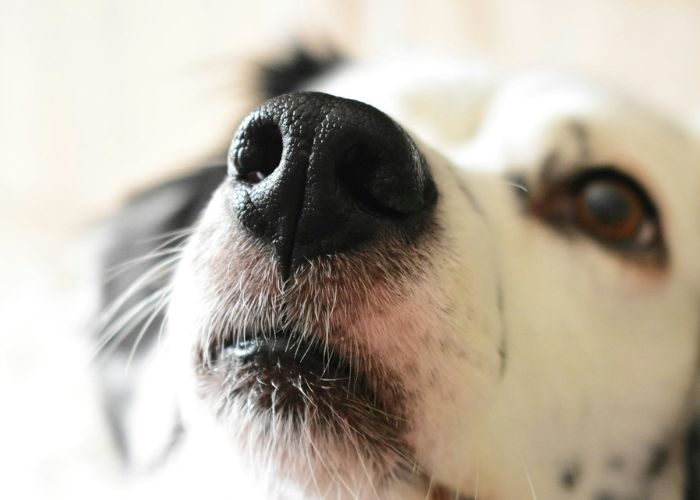Dogs are known for their keen senses, with their noses often being the focal point of scientific curiosity and general wonderment. One of the most intriguing aspects of a dog’s nose is its wetness. This common characteristic is not just a quirky trait; it plays a crucial role in enhancing their sense of smell and overall health. Understanding why a dog’s nose is wet can give us deeper insights into the physiological and environmental factors that influence this canine feature. This moistness is critical not just for their health but also for their ability to interact with their world.

The Role of Moisture in Scent Detection
A dog’s nose is wet primarily because it aids in their olfactory capability, which is the ability to smell. The moisture on a dog’s nose comes from a special gland that secretes mucus, designed to capture scent particles. When a dog’s nose is wet, it can attract and hold more of the scent chemicals from the environment. This moisture helps dissolve these chemicals, allowing dogs to detect and interpret smells more accurately than they could with a dry nose. This enhanced scent detection is vital for various dog behaviors, from hunting and tracking to identifying their territory and other dogs. The effectiveness of this biological mechanism is evident as dogs can smell things that humans would never notice.
Health Indicators Through Nasal Wetness
The wetness of a dog’s nose also serves as a health indicator. A healthy dog typically has a cool, moist nose, although it’s important to note that a dry nose doesn’t always signify illness. Various factors, such as exposure to wind, sun, and indoor heating, can temporarily dry out a dog’s nose. However, changes in the wetness or texture of the nose should be monitored as they can sometimes indicate health issues. Persistent dryness, cracking, or changes in nasal discharge can be a sign of underlying health problems that may require veterinary attention. Regular checks can help ensure that any significant changes are noted and addressed promptly.
Environmental and Physiological Influences
The environment plays a significant role in the condition of a dog’s nose. For instance, dogs that live in more arid climates may have drier noses than those in more humid areas. Similarly, breeds with naturally shorter or flatter noses, like bulldogs or pugs, may have less wet noses due to their unique physiological structures which affect mucus production and evaporation. Understanding these differences is crucial for pet owners to provide the right care and attention to their dogs’ specific needs based on their environment and breed. Adapting care routines to suit individual dogs helps ensure their comfort and health regardless of their natural predispositions.
Daily Activities and Nose Wetness
Interestingly, a dog’s daily activities can also influence the wetness of their nose. Activities like digging in the yard or sniffing through grass can naturally moisten the nose. Dogs often lick their noses, which not only cleans the surface but also adds moisture. This behavior is instinctive and helps to keep their nose in optimal condition for scent detection. Thus, a dog’s active engagement with its environment contributes significantly to maintaining the natural wetness of the nose, which is essential for their sensory abilities.
A dog’s wet nose is more than just a cold surprise when they come to nuzzle you; it’s a complex tool that enhances their olfactory abilities and acts as a barometer for their health. While a moist nose helps with superior scent detection, its condition can also reflect a dog’s overall well-being and the influence of their environment. As pet owners, recognizing the importance of this feature helps ensure that our canine companions are not only happy and effective in their sniffing pursuits but also healthy and well-adjusted to their surroundings. By understanding the science behind why dogs’ noses are wet, we can better appreciate and care for these beloved members of our families.